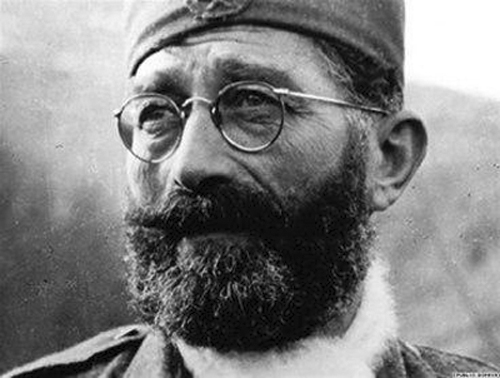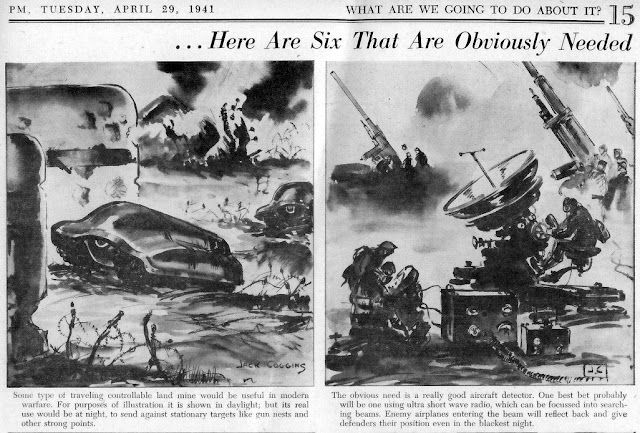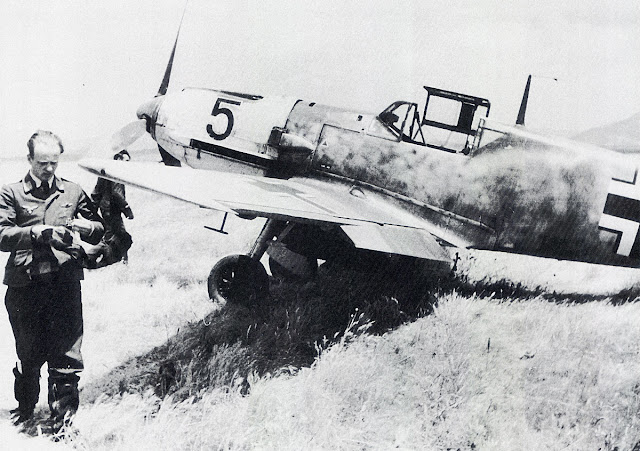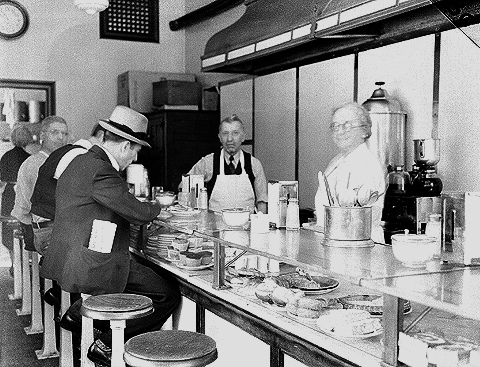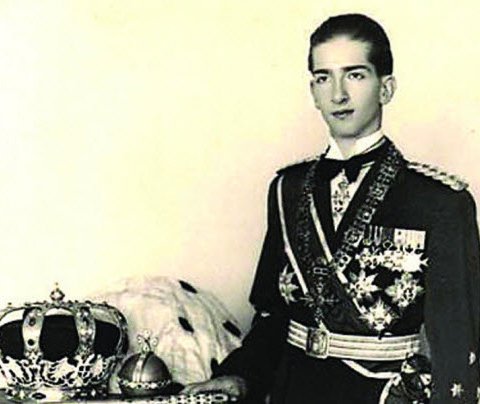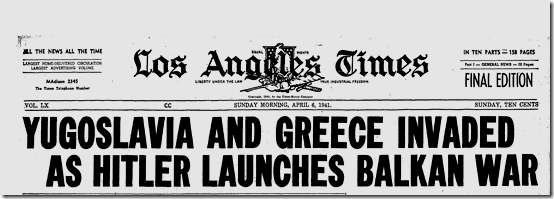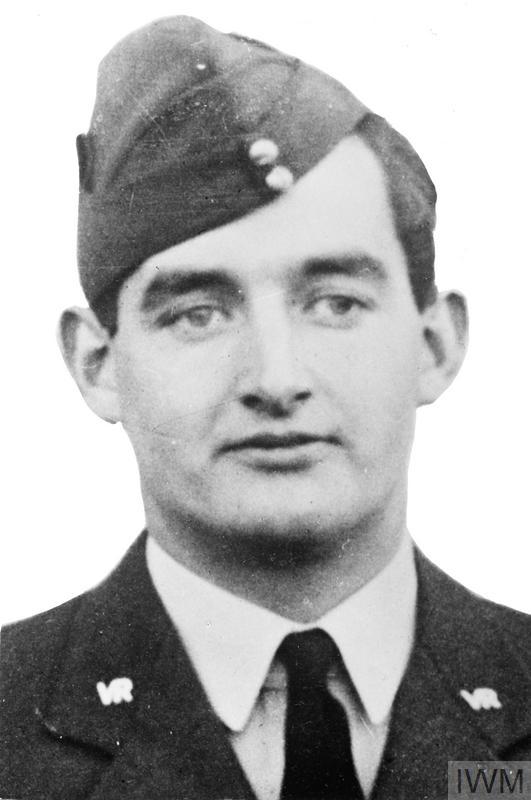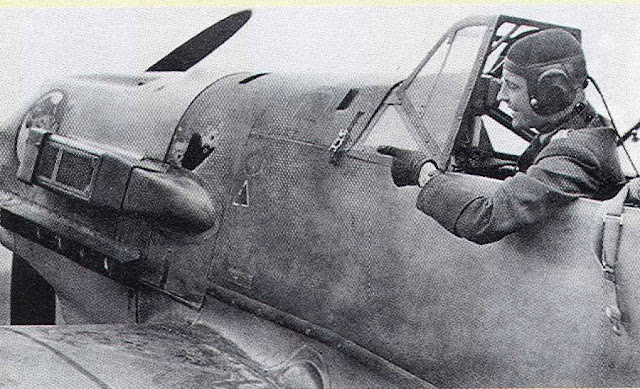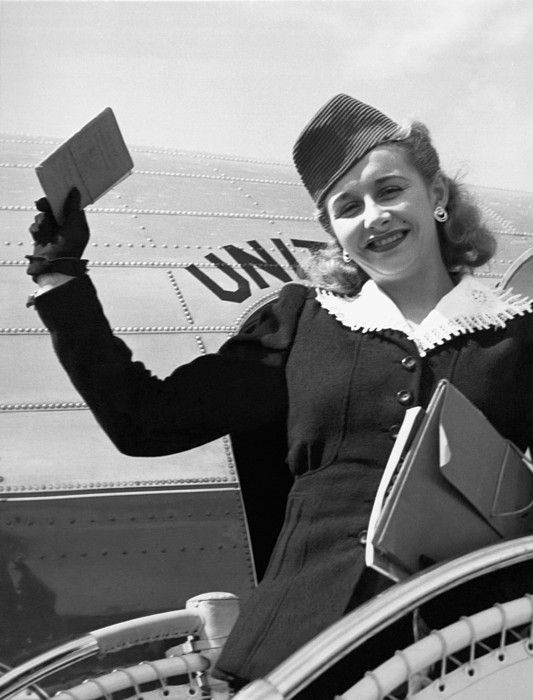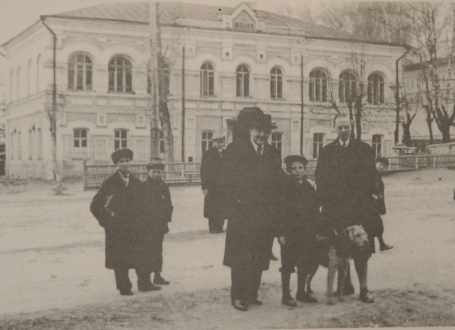Tuesday 29 April 1941
 |
| Soldiers of the DAK (Deutsches Afrika Korps) salute at the graves of 23-year-old gunner Georg Böttiger and 22-year-old PFC Franz Dahmen, both killed near Sollum on 29 April 1941. |
Operation Marita: The climax is at hand on the Greek mainland on 29 April 1941, and this is considered the "end" of the British evacuation, Operation Demon. Resistance ceases at 05:30. The New Zealanders continue to form the vital rearguard as the main Allied forces embark at various ports for transport to Crete and North Africa. While the process may seem fairly perfunctory - get the troops to the ships and get them out - the delaying actions involve desperate fighting at times. Today, Sergeant John Daniel Hinton of the 2nd New Zealand Expeditionary Force leads a charge that takes a German-held house, a mortar, and three machine guns. Sgt. Hinton receives the Victoria Cross for his pains, which are very real as he is wounded in the action and taken prisoner.
The 5th Panzer Division reaches the south coast of the Peloponnese, joined there by SS troops coming from Pyrgos.
A small force of 33 men is rescued from Kalamata. However, 8000 British, New Zealand, Australian, Greek and Yugoslavian men are left behind there to surrender.
Major General Bernard Freyberg arrives at Suda Bay to assume command there. Overall, 50,000 troops evacuate today, but 223,000 men are left behind to become POWs. Fortunately for future British operations, only 12,000 of them are Tommies, but the ANZAC forces lose all their heavy equipment. The Germans lose 2,559 men dead in the campaign, 5820 wounded, and 3,169 missing. With the mainland cleared, the only significant part of Greece left to conquer is Crete.
Convoy GA 15 takes off troops from the mainland, under heavy escort. Five destroyers are dispatched to rescue any men stranded on Greek islands. The Luftwaffe attacks the departing convoy and scores a near-miss on destroyer HMS Nubian and sinks 125 ton Greek ship Aetos.
The Luftwaffe also attacks Suda Bay in Crete. They sink Greek freighters 1433 ton Elsi and 3537 ton Konistra. The Germans later raise them and return them to service.
The Italians begin to tighten their hold on Croatia: Italian Foreign Minister Count Ciano writes in his diary that "The Croatian situation has moved forward many steps. The crown is offered to a prince of the house of Savoy..."
Meanwhile, Yugoslav Serb General Dragoljub "Draža" Mihailović crosses into Serbia to form a resistance. He grandly styles it the "Command of Chetnik Detachments of the Yugoslav Army." He heads toward Ravna Gora. Accompanying him are seven officers and 24 others. He does not find much help during his journey.
The victory in Greece does not come a minute too soon for the Germans. They now have their Twelfth Army out of position for Operation Barbarossa, and there is not enough time to redirect it in time for the proposed operations in the East. This will have major implications on the strategic options available to Army Group South.
The main Iraqi force is on a plateau overlooking the airfield and comprises both infantry and artillery brigades, a dozen armored cars and some tanks. The Iraqis command the British to cease all movement in and out of the base, including by land and air. The British, nonplussed, ask the Iraqis to leave the area. Neither side does what the other wants, and there is a stalemate. The RAF launches some strikes against the encroaching Iraqi forces.
The British in London are kept well-informed of the brewing situation and already have landed troops at the port of Basra, with more on the way. However, those troops are far away, and the strain on British resources is growing just as the Greek situation is falling apart and the East African campaign is reaching its climax. Fortunately for the British, they have extensive resources reasonably close at hand in their colony of India, and the Italians in East Africa are not putting up much of a fight. More troops from the British 10th Indian Division land at Basra today despite Iraq's prohibition.
While there is no possibility of supporting Iraq with ground forces (which is what they really need), the Germans are contemplating support for the Iraqis by air. However, such efforts are hampered by the extreme distances involved from the nearest bases in Greece and North Africa and Allied control over much of the intervening territory. The Germans also have no ground facilities in Iraq. The Vichy French in Syria and Lebanon, however, have offered the use of their airfields, and Hermann Goering is anxious to curry favor with Hitler by showing the reach of his Luftwaffe.
Middle East: The always murky relations between the British and French become murkier today when the British warn the Vichy French - who are not actually British Allies - that they fear a Luftwaffe airborne landing in Syria. Commander in Chief of the Army of the Levant (Armée du Levant) and High Commissioner of the Levant General Henri Dentz replies simply that he intends to repel all aggression - an ambiguous statement that seems to apply as much to the British as the Wehrmacht. Dentz commands 45,000 men and the vital (at the moment) bridge to Iraq. The British, not operating in the best faith, decide to attack Dentz' Vichy airfields and contemplate invading Syria and Lebanon - though that would increase the strain on their Mediterranean resources.
European Air Operations: RAF 101 Squadron sends three Blenheims to attack shipping off Nieuport, with one Blenheim badly damaged. RAF No. 82 Squadron sends a larger force of 15 Blenheims on a routine patrol off Norway, damaging a freighter but losing two planes. Other operations are launched during the day against shipping off Calais and various other coastal targets, while RAF Bomber Command attacks Rotterdam overnight with 31 aircraft. Another attack is sent overnight against Mannheim with 71 aircraft.
The Luftwaffe raids Devonport, damaging light cruiser HMS Trinidad, under construction. It also raids Plymouth with 162 planes, sinking Lighter C. 293 and sinking 775-ton auxiliary patrol vessel Pessac (later raised and repaired) and British ship Moncousu.
The Luftwaffe (a Junkers Ju 88 of KGr 506) sinks 722-ton British freighter Kalua in the mouth of the Tyne. Everyone survives.
In the same attack at the Tyne, the Luftwaffe damages 2822-ton British freighter Corglen and 2498-ton Norwegian freighter Askeladden. Both ships return to port in tow.
The German 1st MTB Flotilla sends three boats (S. 26, 27, 29 and 55) against convoy EC 13 off Cromer. Though escorting destroyers HMS Worcester, Eglinton, Whitshed and Wallace disperse the attackers, they sink 1555-ton British freighter Ambrose Fleming (11 deaths).
Chilean passenger ship Chiloe runs aground on Puchoco Point and is lost.
British 207 ton freighter Prowess hits a mine in the Humber. It makes it back to port.
A harbor launch, HMML 278, hits a mine at Portsmouth and blows up. Everyone aboard perishes.
British ship Canadolite, captured by German raider Kormoran, arrives in France.
British ship Advocate, captured by Admiral Scheer near Seychelles in February, also arrives in France at the Gironde.
Convoy SC-30 departs from Halifax bound for Liverpool.
Minesweeper HMS Hildasay is launched.
Canadian corvettes HMCS Brandon and Shediac launch in Quebec, while Pictou is commissioned.
U-84 (Kptlt. Horst Uphoff) is commissioned, and U-514 is laid down.
Battle of the Mediterranean: General Erwin Rommel has planned a major attack on British forces in the south of the Tobruk perimeter on 30 April. However, he is no longer the supreme authority in North Africa: recently arrived Major-General Friedrich Paulus a Deputy Chief of the General Staff officially has been sent to "observe" and, informally, put the brakes on Rommel's wild pace of operations. After conferring with Italian leader Gariboldi and studying the situation, Paulus allows the operation to proceed. The German and Italian forces plan to proceed to their take-off spots.
Winston Churchill informs Air Chief Marshal Longmore in the Middle East that the Royal Navy is planning another operation to send "up to 140 Hurricanes" to Malta "by the 25th May."
The RAF attacks Benghazi.
At Malta, six Junkers Ju 88s raid Valletta Harbor at dusk and lose one plane.
The Luftwaffe bombs and sinks convoy service ship 3081 ton HMS Chakla in Tobruk Harbor. Two men are wounded, none lost.
German Military: Adolf Hitler addresses 9,000 officer candidates in the Berlin Sportpalast. Following his discussion with Count Schulenburg the previous evening, he is more determined than ever to invade the Soviet Union, and he loves to drop hints in his speeches:
General Percival in Singapore appoints a new commander of Malaya.
US Military: Charles Lindbergh's letter of resignation from the Army Air Corps Reserve is accepted by the US War Department. President Roosevelt has called Lindbergh unpatriotic for being a leading member of the America First movement.
British Government: Winston Churchill faces some disquiet in the House of Commons. He brusquely dismisses questions that aim to clarify British war and peace aims and a proposal to appoint a supreme War Cabinet composed of ministers with no other responsibilities "as in the last war," and including visiting Australian Prime Minister Menzies. The clear implication is that Churchill's one-man show running the entire war effort needs to be reined in a bit.
For his part, Menzies, who has come to be seen as almost a savior by the anti-Churchill faction within the government (and there indeed is one), in fact, is winding up his time in London. This is his second anniversary as Prime Minister of Australia, a fact he proudly notes in his diary. He expresses frustration that he is the only member of the Defence Committee who questions Churchill's decisions.
April 1941
April 1, 1941: Rommel Takes BregaThe 5th Panzer Division reaches the south coast of the Peloponnese, joined there by SS troops coming from Pyrgos.
A small force of 33 men is rescued from Kalamata. However, 8000 British, New Zealand, Australian, Greek and Yugoslavian men are left behind there to surrender.
Major General Bernard Freyberg arrives at Suda Bay to assume command there. Overall, 50,000 troops evacuate today, but 223,000 men are left behind to become POWs. Fortunately for future British operations, only 12,000 of them are Tommies, but the ANZAC forces lose all their heavy equipment. The Germans lose 2,559 men dead in the campaign, 5820 wounded, and 3,169 missing. With the mainland cleared, the only significant part of Greece left to conquer is Crete.
Convoy GA 15 takes off troops from the mainland, under heavy escort. Five destroyers are dispatched to rescue any men stranded on Greek islands. The Luftwaffe attacks the departing convoy and scores a near-miss on destroyer HMS Nubian and sinks 125 ton Greek ship Aetos.
The Luftwaffe also attacks Suda Bay in Crete. They sink Greek freighters 1433 ton Elsi and 3537 ton Konistra. The Germans later raise them and return them to service.
The Italians begin to tighten their hold on Croatia: Italian Foreign Minister Count Ciano writes in his diary that "The Croatian situation has moved forward many steps. The crown is offered to a prince of the house of Savoy..."
Meanwhile, Yugoslav Serb General Dragoljub "Draža" Mihailović crosses into Serbia to form a resistance. He grandly styles it the "Command of Chetnik Detachments of the Yugoslav Army." He heads toward Ravna Gora. Accompanying him are seven officers and 24 others. He does not find much help during his journey.
The victory in Greece does not come a minute too soon for the Germans. They now have their Twelfth Army out of position for Operation Barbarossa, and there is not enough time to redirect it in time for the proposed operations in the East. This will have major implications on the strategic options available to Army Group South.
The main Iraqi force is on a plateau overlooking the airfield and comprises both infantry and artillery brigades, a dozen armored cars and some tanks. The Iraqis command the British to cease all movement in and out of the base, including by land and air. The British, nonplussed, ask the Iraqis to leave the area. Neither side does what the other wants, and there is a stalemate. The RAF launches some strikes against the encroaching Iraqi forces.
The British in London are kept well-informed of the brewing situation and already have landed troops at the port of Basra, with more on the way. However, those troops are far away, and the strain on British resources is growing just as the Greek situation is falling apart and the East African campaign is reaching its climax. Fortunately for the British, they have extensive resources reasonably close at hand in their colony of India, and the Italians in East Africa are not putting up much of a fight. More troops from the British 10th Indian Division land at Basra today despite Iraq's prohibition.
While there is no possibility of supporting Iraq with ground forces (which is what they really need), the Germans are contemplating support for the Iraqis by air. However, such efforts are hampered by the extreme distances involved from the nearest bases in Greece and North Africa and Allied control over much of the intervening territory. The Germans also have no ground facilities in Iraq. The Vichy French in Syria and Lebanon, however, have offered the use of their airfields, and Hermann Goering is anxious to curry favor with Hitler by showing the reach of his Luftwaffe.
Middle East: The always murky relations between the British and French become murkier today when the British warn the Vichy French - who are not actually British Allies - that they fear a Luftwaffe airborne landing in Syria. Commander in Chief of the Army of the Levant (Armée du Levant) and High Commissioner of the Levant General Henri Dentz replies simply that he intends to repel all aggression - an ambiguous statement that seems to apply as much to the British as the Wehrmacht. Dentz commands 45,000 men and the vital (at the moment) bridge to Iraq. The British, not operating in the best faith, decide to attack Dentz' Vichy airfields and contemplate invading Syria and Lebanon - though that would increase the strain on their Mediterranean resources.
 |
| RAF personnel boarding Short Sunderland Mark I, T9048 'DQ-N', of No. 228 Squadron RAF at Kalamata, on or about 29 April 1941. |
The Luftwaffe raids Devonport, damaging light cruiser HMS Trinidad, under construction. It also raids Plymouth with 162 planes, sinking Lighter C. 293 and sinking 775-ton auxiliary patrol vessel Pessac (later raised and repaired) and British ship Moncousu.
The Luftwaffe (a Junkers Ju 88 of KGr 506) sinks 722-ton British freighter Kalua in the mouth of the Tyne. Everyone survives.
In the same attack at the Tyne, the Luftwaffe damages 2822-ton British freighter Corglen and 2498-ton Norwegian freighter Askeladden. Both ships return to port in tow.
The German 1st MTB Flotilla sends three boats (S. 26, 27, 29 and 55) against convoy EC 13 off Cromer. Though escorting destroyers HMS Worcester, Eglinton, Whitshed and Wallace disperse the attackers, they sink 1555-ton British freighter Ambrose Fleming (11 deaths).
Chilean passenger ship Chiloe runs aground on Puchoco Point and is lost.
British 207 ton freighter Prowess hits a mine in the Humber. It makes it back to port.
A harbor launch, HMML 278, hits a mine at Portsmouth and blows up. Everyone aboard perishes.
British ship Canadolite, captured by German raider Kormoran, arrives in France.
British ship Advocate, captured by Admiral Scheer near Seychelles in February, also arrives in France at the Gironde.
Convoy SC-30 departs from Halifax bound for Liverpool.
Canadian corvettes HMCS Brandon and Shediac launch in Quebec, while Pictou is commissioned.
U-84 (Kptlt. Horst Uphoff) is commissioned, and U-514 is laid down.
Battle of the Mediterranean: General Erwin Rommel has planned a major attack on British forces in the south of the Tobruk perimeter on 30 April. However, he is no longer the supreme authority in North Africa: recently arrived Major-General Friedrich Paulus a Deputy Chief of the General Staff officially has been sent to "observe" and, informally, put the brakes on Rommel's wild pace of operations. After conferring with Italian leader Gariboldi and studying the situation, Paulus allows the operation to proceed. The German and Italian forces plan to proceed to their take-off spots.
Winston Churchill informs Air Chief Marshal Longmore in the Middle East that the Royal Navy is planning another operation to send "up to 140 Hurricanes" to Malta "by the 25th May."
The RAF attacks Benghazi.
At Malta, six Junkers Ju 88s raid Valletta Harbor at dusk and lose one plane.
The Luftwaffe bombs and sinks convoy service ship 3081 ton HMS Chakla in Tobruk Harbor. Two men are wounded, none lost.
- Turkey is the key to protecting British forces in Egypt and may help the Germans in small ways;
- The Germans are eyeing attacks on Syria, by airborne troops using Rhodes as their jump-off point, and also Crete. He seems much more concerned about Syria than Crete, however;
- Spain is "most critical" and Franco may grant the Germans transit rights;
- The US should force Vichy France to "break with" the Germans.
German/Indian Relations: German Foreign Minister Ribbentrop meets with Subhas Chandra Bose in Vienna.
German Military: Adolf Hitler addresses 9,000 officer candidates in the Berlin Sportpalast. Following his discussion with Count Schulenburg the previous evening, he is more determined than ever to invade the Soviet Union, and he loves to drop hints in his speeches:
If you ask me, ‘Fuhrer, how long will the war last?’ I can only say as long as it takes to emerge victorious! Whatever may come! As a National Socialist during the struggle for power I never knew the word ‘capitulation.’ And there is one word I will never know as leader of the German people and your Supreme Commander, and again it is ‘capitulation’— that is, to submit to the will of another. Never, never! And you too have to think like that.It is around this time that he decides to launch Operation Barbarossa on Sunday, 22 June 1941.
General Percival in Singapore appoints a new commander of Malaya.
US Military: Charles Lindbergh's letter of resignation from the Army Air Corps Reserve is accepted by the US War Department. President Roosevelt has called Lindbergh unpatriotic for being a leading member of the America First movement.
British Government: Winston Churchill faces some disquiet in the House of Commons. He brusquely dismisses questions that aim to clarify British war and peace aims and a proposal to appoint a supreme War Cabinet composed of ministers with no other responsibilities "as in the last war," and including visiting Australian Prime Minister Menzies. The clear implication is that Churchill's one-man show running the entire war effort needs to be reined in a bit.
For his part, Menzies, who has come to be seen as almost a savior by the anti-Churchill faction within the government (and there indeed is one), in fact, is winding up his time in London. This is his second anniversary as Prime Minister of Australia, a fact he proudly notes in his diary. He expresses frustration that he is the only member of the Defence Committee who questions Churchill's decisions.
April 1941
April 2, 1941:Rommel Takes Agedabia
April 3, 1941: Convoy SC-26 Destruction
April 4, 1941: Rommel Takes Benghazi
April 5, 1941: Rommel Rolling
April 6, 1941: Operation Marita
April 7, 1941: Rommel Takes Derna
April 8, 1941: Yugoslavia Crumbling
April 9, 1941: Thessaloniki Falls
April 10, 1941: USS Niblack Attacks
April 11, 1941: Good Friday Raid
April 12, 1941: Belgrade and Bardia Fall
April 13, 1941: Soviet-Japanese Pact
April 14, 1941: King Peter Leaves
April 15, 1941: Flying Tigers
April 16, 1941: Battle of Platamon
April 17, 1941: Yugoslavia Gone
April 18, 1941: Me 262 First Flight
April 19, 1941: London Smashed
April 20, 1941: Hitler's Best Birthday
April 21, 1941: Greek Army Surrenders
April 22, 1941: Pancevo Massacre
April 23, 1941: CAM Ships
April 24, 1941: Battle of Thermopylae
April 25, 1941: Operation Demon
April 26, 1941: Operation Hannibal
April 27, 1941: Athens Falls
April 28, 1941: Hitler Firm about Barbarossa
April 29, 1941: Mainland Greece Falls
April 30, 1941: Rommel Attacks
2020

